Specialty vs. Commodity Tea: What Sets Them Apart?

Not all teas are created equal. If you’ve ever wondered why some teas taste flat while others feel like a sensory journey, the answer lies in one major distinction: specialty tea vs. commodity tea.
In this guide, we’ll explain what each type means, how they’re produced, and why Nepali specialty tea is in a league of its own.
What Is Specialty Tea?
Specialty tea refers to high-grade loose-leaf tea sourced from small-scale farms with a focus on quality, ethical practices, and full-leaf integrity. Unlike standard grocery store tea, specialty teas are carefully cultivated, often handpicked, and processed with minimal machinery to preserve flavor complexity.
These teas are typically:
-
Single-origin
-
Organic or sustainably grown
-
Rich in natural antioxidants
-
Transparent in sourcing and flavor profile
📖 Want to explore how to choose the best tea? Check out our Beginner’s Guide to Choosing Loose Leaf Tea
What Is Commodity Tea?
Commodity tea refers to mass-produced, lower-grade tea, often found in traditional tea bags or ready-to-drink bottles. It is commonly made from “fannings” or “dust”—tiny broken particles left over from tea processing.
These teas are:
-
Mechanically harvested in bulk
-
Blended from multiple regions
-
Designed for consistency and low cost
-
Often stripped of nuanced flavor
Most commodity teas are sourced from industrial farms in India, Kenya, and Sri Lanka, where volume trumps quality.
Key Differences: Specialty vs. Commodity Tea
| Feature | Specialty Tea | Commodity Tea |
|---|---|---|
| Leaf Quality | Whole leaf or large leaf | Dust/fannings |
| Flavor | Complex, layered, terroir-driven | Flat, one-dimensional |
| Sourcing | Single-origin, traceable | Blended, bulk-sourced |
| Ethics | Organic, fair trade, sustainable | Often lacks transparency |
| Health Profile | High in antioxidants, additive-free | May include flavoring or additives |
| Packaging | Loose, eco-conscious | Often plastic-filled tea bags |
Why Specialty Tea Tastes Better
Specialty tea is about more than luxury—it's about integrity in the cup. Grown at higher altitudes with distinct soil and climate conditions, specialty tea expresses the terroir (like wine), offering a unique character from each region.
When brewed properly, these teas reveal notes like:
-
Malt and honey (black teas)
-
Stone fruit and florals (oolongs)
-
Grassy umami or citrus (greens)
-
Delicate melon or orchid (white teas)
Commodity teas, by contrast, are engineered for sameness—brewed quickly, often over-steeped, and sometimes masked with flavorings.
Health Benefits of Specialty Tea
Drinking loose-leaf specialty tea can support your health thanks to:
-
🌿 Higher antioxidant content (e.g., EGCG, catechins, polyphenols)
-
❌ No artificial additives
-
💧 Cleaner processing without synthetic preservatives
Tea dust in commodity bags may oxidize faster and lose its potency—meaning fewer health benefits per cup.
Ethical Impact: What You Support Matters
💚 Specialty Tea:
-
Fair trade wages
-
Organic or low-intervention farming
-
Support for rural communities
-
Climate-friendly practices (like handpicking and reduced waste)
⚠️ Commodity Tea:
-
Large monoculture farms
-
Mechanized harvesting (with pesticide risk)
-
Often poor labor conditions
-
Plastic-based tea bags (some contain microplastics)
When you choose specialty, you’re not just sipping tea—you’re supporting small farmers and ethical sourcing in Nepal, creating better lives and a better planet.
Why Nepali Tea Is a True Specialty
At Nepali Tea Traders, our teas come from the Ilam region of Nepal, near Darjeeling. This high-elevation terroir creates teas with distinct notes—think golden tips, floral undertones, and a natural sweetness.
Some of our best-loved specialties include:
-
🌟 Himalayan Golden Black Tea
Award-winning, malty, honey-sweet with golden buds -
🏔️ Spring White Buds White Tea
Delicate and creamy, featured in The New York Times -
🔥 Annapurna Amber Oolong
Toasty, smooth, and full-bodied
Real Value vs. Cost
While specialty tea might seem more expensive at first glance, it actually provides better value over time:
-
You can re-steep most loose-leaf teas 2–3 times
-
You need less tea per cup for full flavor
-
You're investing in quality, not filler
Plus, the experience of brewing loose-leaf tea is meditative, sensory, and deeply satisfying.
Pros and Cons of Specialty Tea
✅ Pros:
-
Full-bodied, clean flavor
-
Health-enhancing antioxidants
-
Ethical sourcing and transparency
-
No artificial ingredients or fillers
❌ Cons:
-
Slightly higher cost per ounce
-
Requires steeping knowledge (easy to learn!)
-
Needs airtight storage
FAQ: Specialty vs. Commodity Tea
Is specialty tea always organic?
Not always—but many small producers like ours follow organic practices even if not formally certified. All our teas are naturally grown and free of chemicals.
How do I know if I’m buying specialty tea?
Look for signs like:
-
Whole leaf appearance
-
Single-origin or estate tea
-
Direct trade or farmer-first sourcing
-
Transparency in flavor notes and processing
Is Nepali tea considered specialty?
Absolutely. Nepali Tea Traders sources directly from small family farms in the Himalayan foothills—where altitude, climate, and craftsmanship produce world-class specialty teas.
Final Sip: Is Specialty Tea Worth It?
If you care about flavor, health, and where your tea comes from, specialty tea is worth every sip.
Switching from commodity tea isn’t just a taste upgrade—it’s a meaningful shift toward better choices for your body, community, and planet.
Ready to Taste the Difference?
Explore our full collection of loose-leaf Nepali teas and discover why connoisseurs, sommeliers, and mindful drinkers are choosing specialty over supermarket tea.
☕ Elevate your ritual. Sip consciously.
